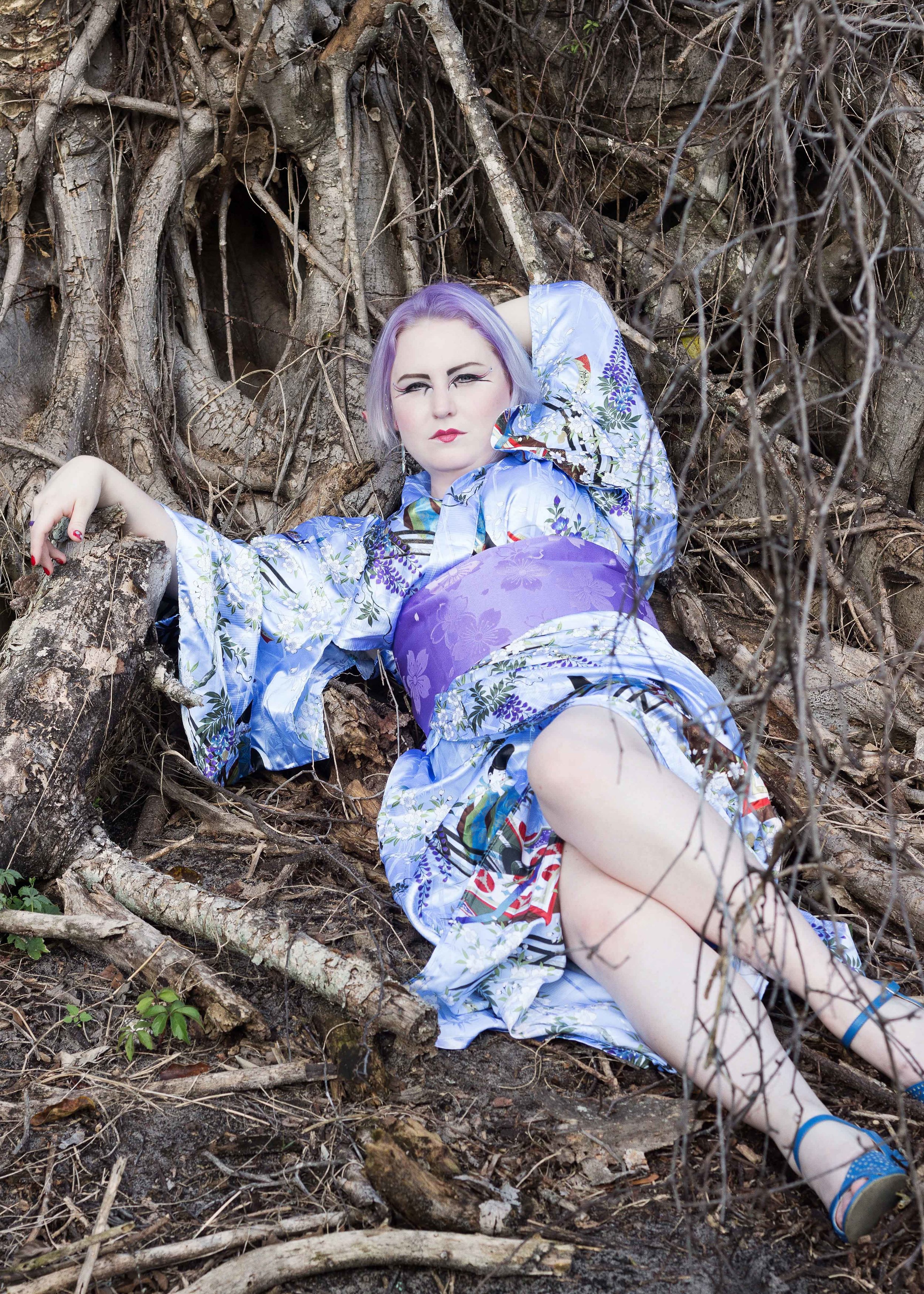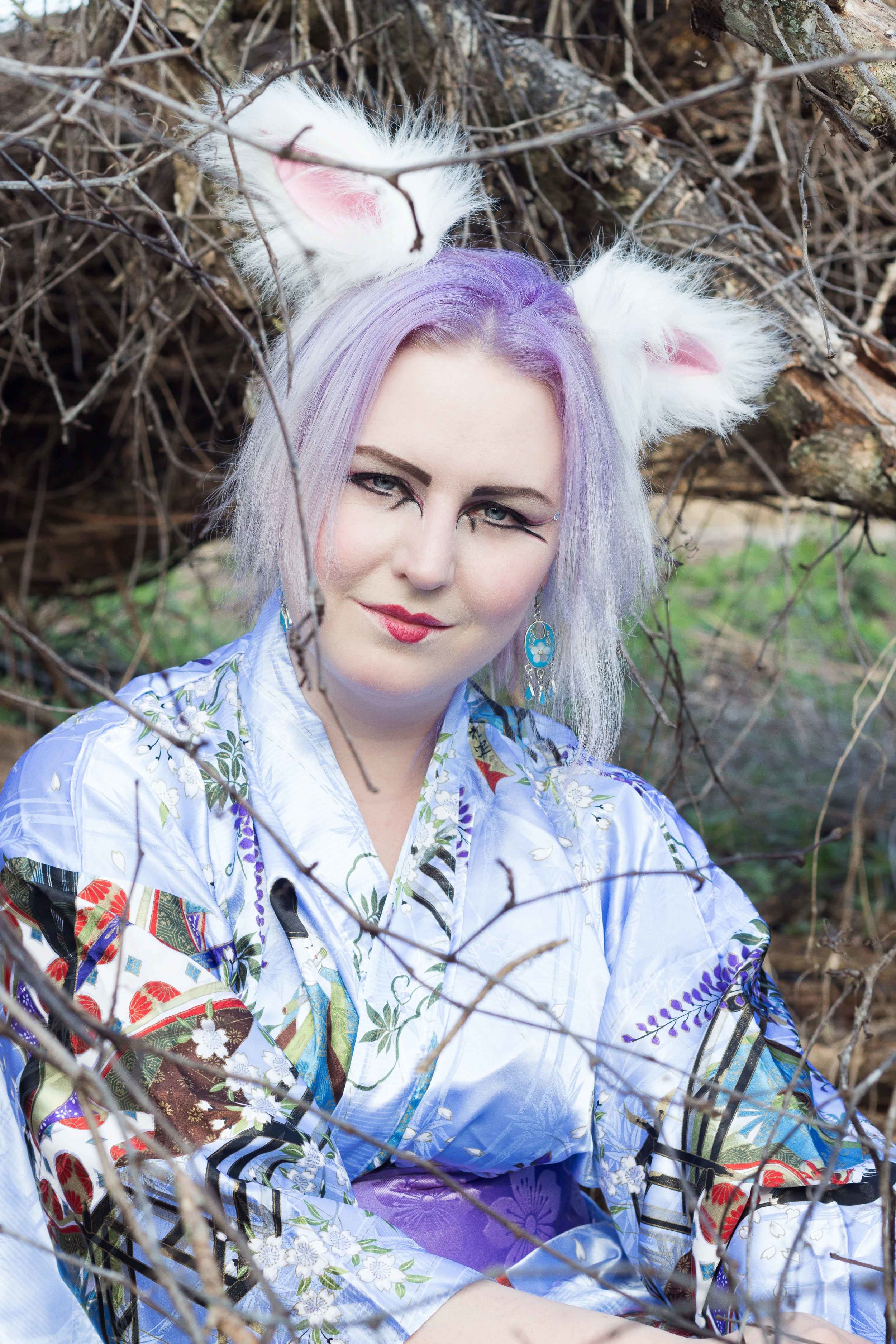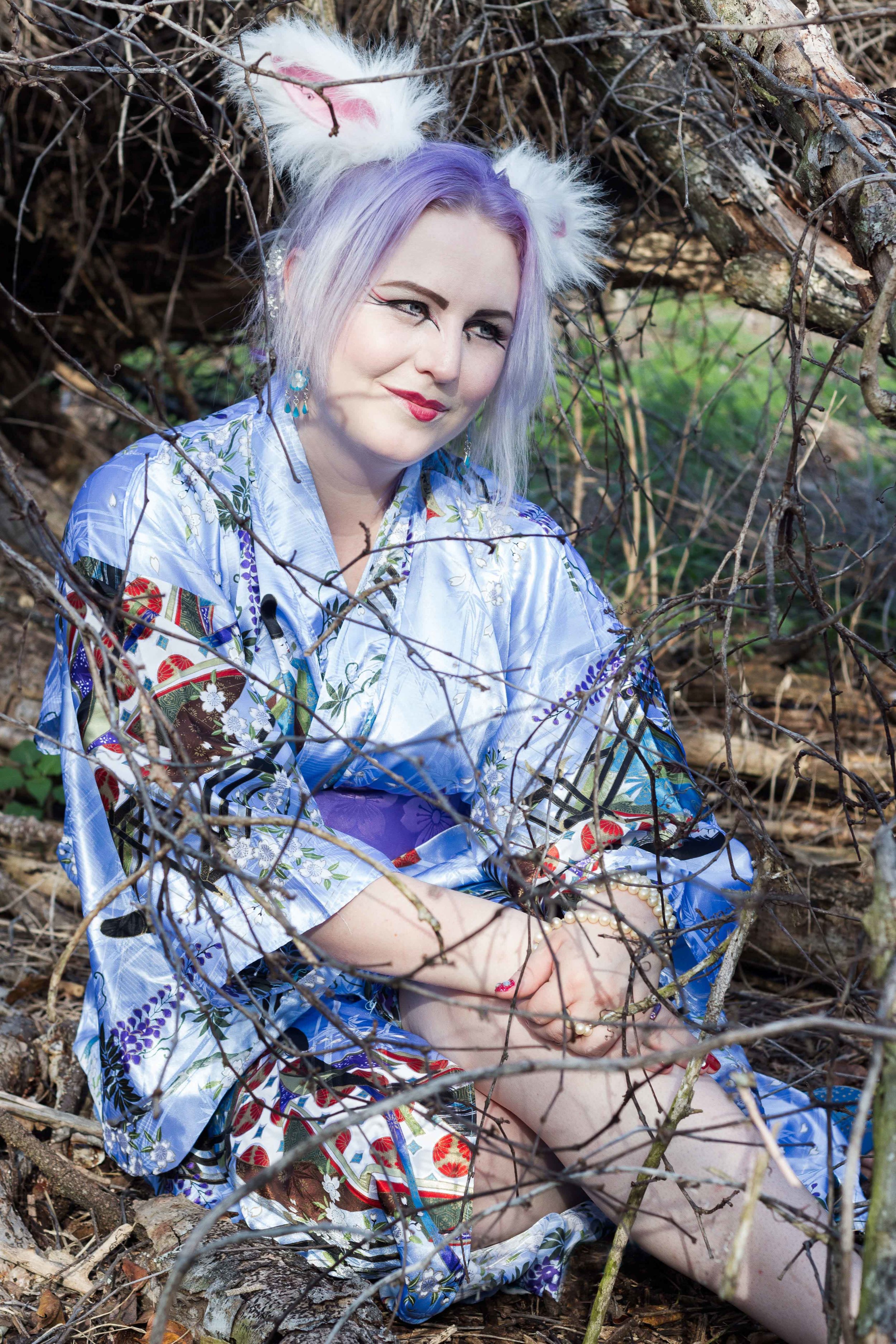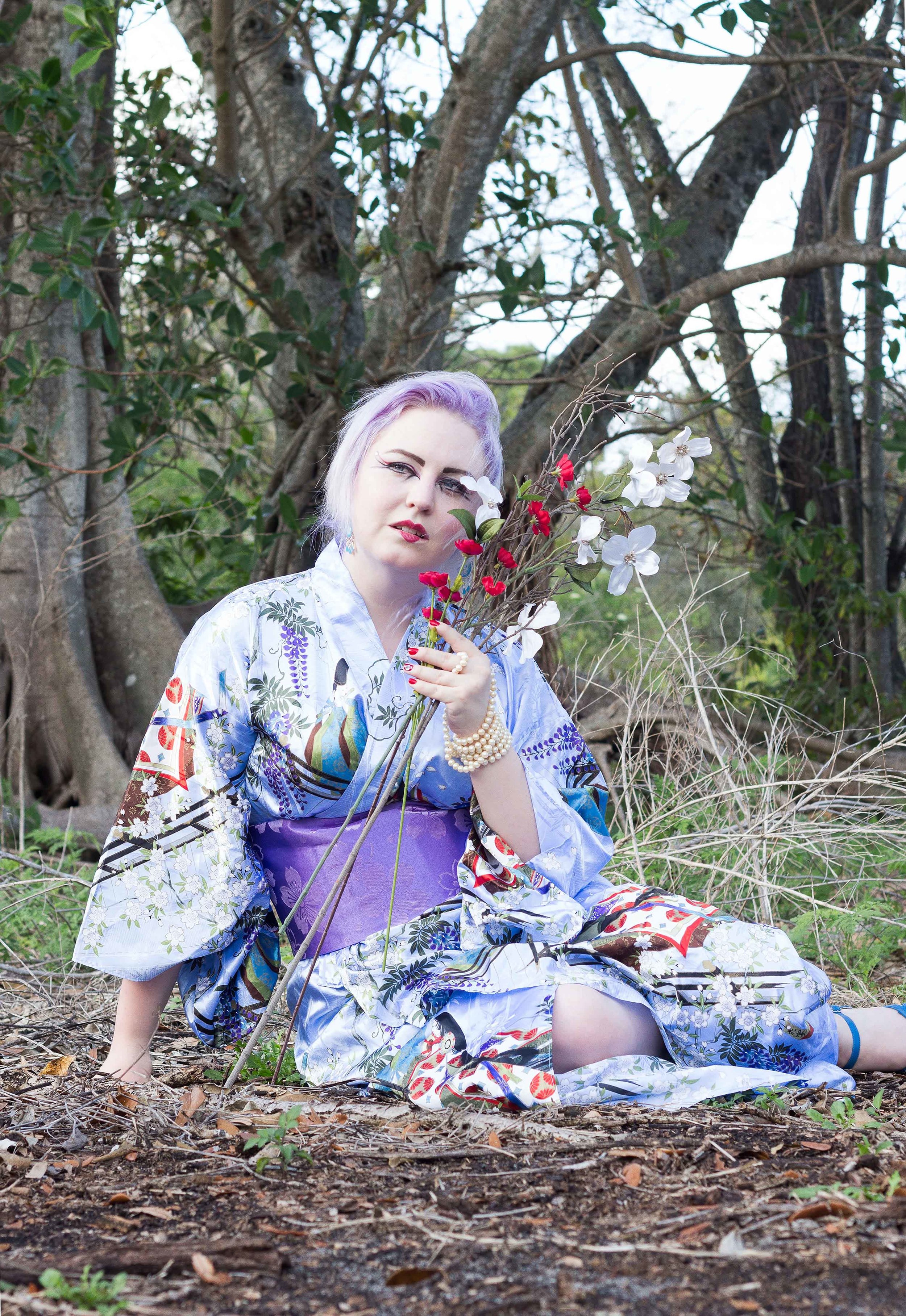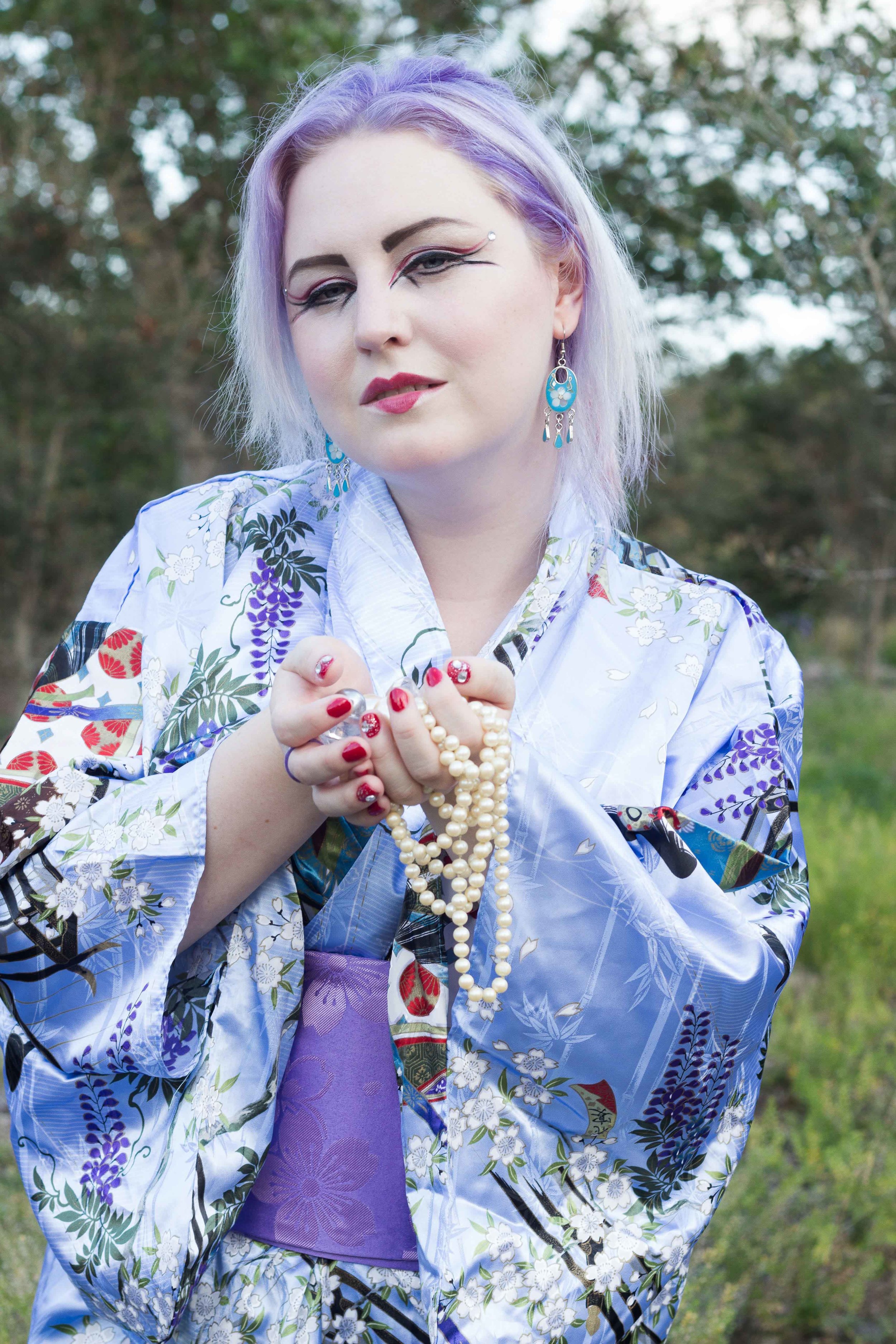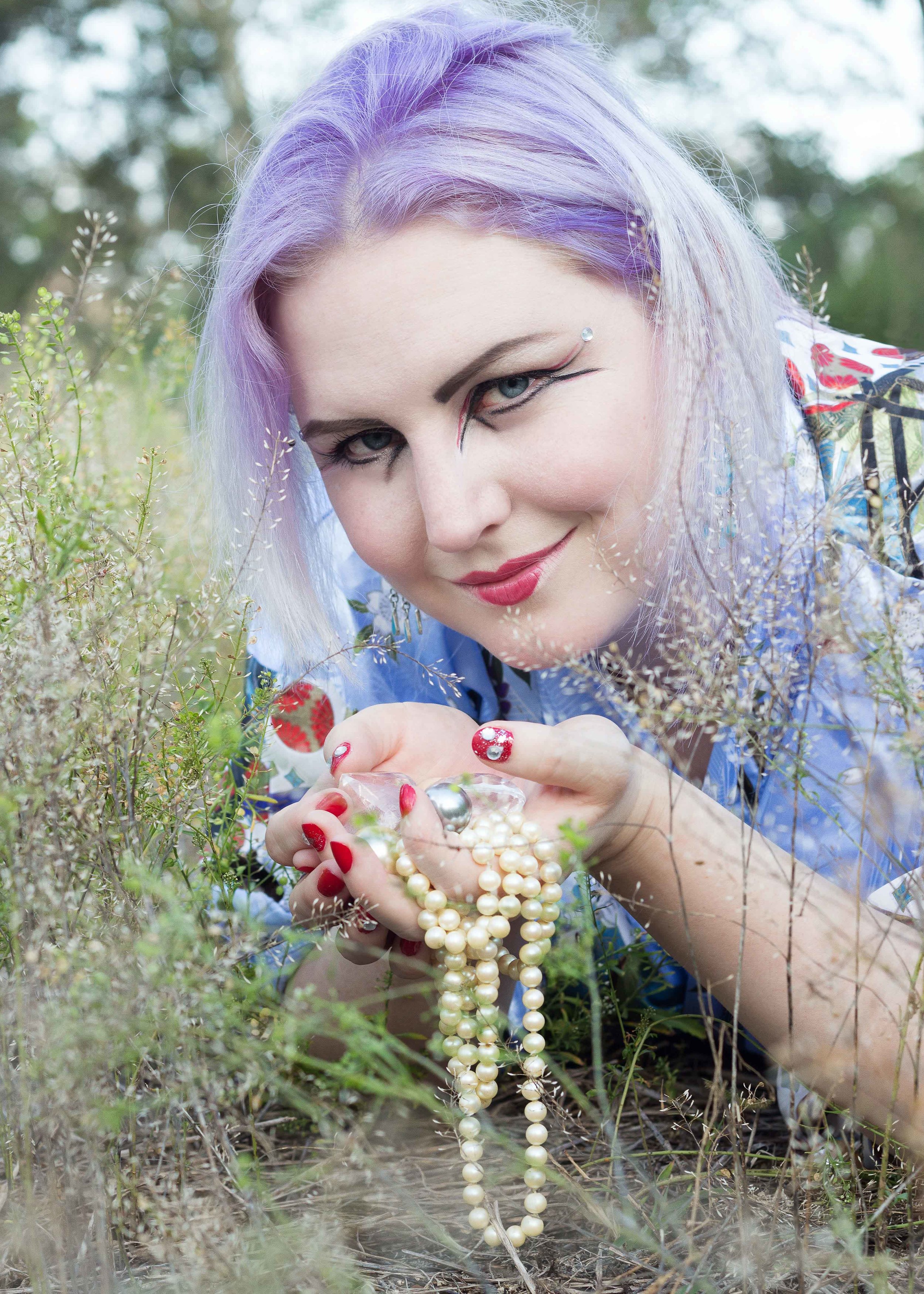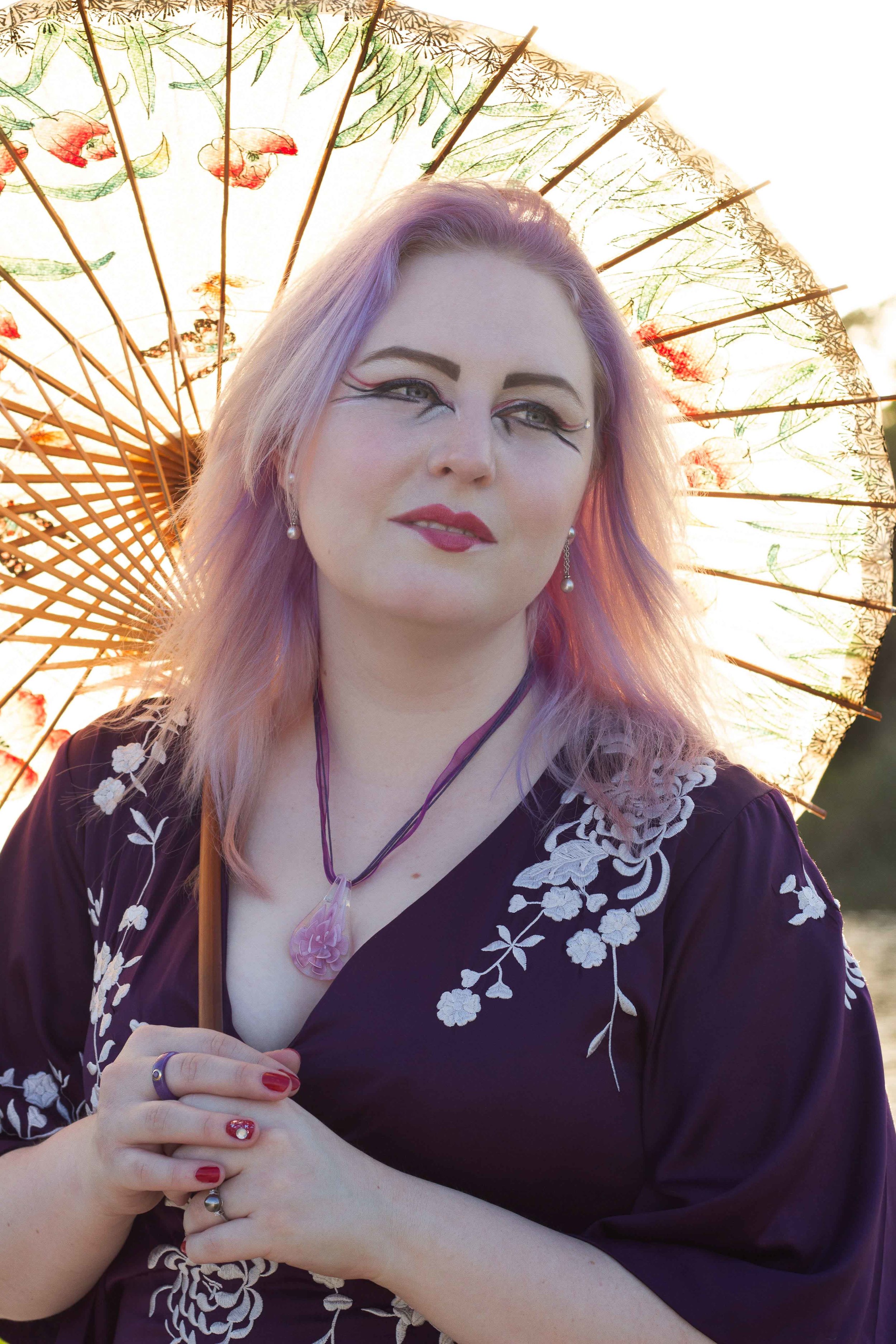introducing Laura as Inari, the goddess of abundance
“The trickstress ‘imagines a new reality and then finds a way to bring it into being, often through deception because the old order will not give in without a fight’ ”
About Laura
Laura is the embodiment of playful, creative energy. Her passion and exuberance for life are as evident in her brightly colored hair as they are in her smile, her writing, and her bright personality. Laura is a graduate student in the English program at Florida Atlantic University, and has an extensive background in gender studies. She is also a writer of graphic novels and a cosplayer when she can find the time. Creative energy is Laura’s inner fire, and for this shoot, we chose a goddess that embodied Laura’s playful creativity and courage to confront social stereotypes through her scholarship and creative writing. Laura’s “Splitting Seams” (www.splittingseams.com) graphic novels explore the challenges and gifts of a set of twins who are sewn together at birth in an attempt to save their life. This series addresses themes such as mental and social differences, stereotypes, and the triumph of the human spirit through difficulty.
Laura embraced the theme of her photo shoot with enthusiasm, and we loved the way her playful and powerful spirit came through in these photographs. The interplay between her lavender ombre hair, her fair skin, and the purple kimono were just magical! Makeup artist Luciana Portes did an incredible job as well! I love the tiny jewels at the corners of Laura’s eye, which express a literal mischievous twinkle!
About the Goddess
The Goddess Inari is the Japanese goddess of fertility and abundance. She is often depicted carrying rice or armfuls of food/produce, or even eating. She is portrayed as male/female and androgenous. Many Trickster God/desses are often gender non-normative, and for this reason, have served as deities for the transgender and alternative lifestyle communities. In literature and folklore, Trickster/ess figures were often court jesters, clowns, circus creatures, or fools (Shakespeare used this trope frequently). Trickster deities were also quite frequently shapeshifters and took animal form to teach mortals a lesson or two. Uncle Remus’ tales of the fox and Native American tales of foxes, Coyote, Raven, and Grandmother Spider who sits at the center of all creation are some well-known examples of this theme. Many Native traditions considered clowns and tricksters as essential to a connection with the divine. It is only in recent modern culture that the sacred has been so cruelly divided from the profane. For more info on Native American Mythology, read anything by Paula Gunn Allen, poet and memorist (I recommend “The Sacred Hoop”)
Kate Bornstein writes of the importance of challenging gender norms and the powerful role of tricksters, drag queens and all those that reveal the fluidity of cultural norms (“Send in the Clowns”). The Goddess Inari often embodied the form a fox that shapeshifted into women. She was also associated with the kitsune, or nine-tailed fox. The more tails a fox has, the wiser and more powerful it was considered. Jewels and pearls are also a common symbol of Inari. Other common elements in depictions of Inari include a sickle, a sheaf or sack of rice, and a sword. Another belonging was their whip—although they were hardly known to use it, it was a powerful weapon that was used to burn people's crops of rice. In Laura’s photos, you can see the symbols of the pearls and jewels, as well as the red and white flowers with pearl centers that symbolize Inari’s colors.
Written by and Goddess Consultation provided by Mary Reid Bogue, mrboguewrites@gmail.com

